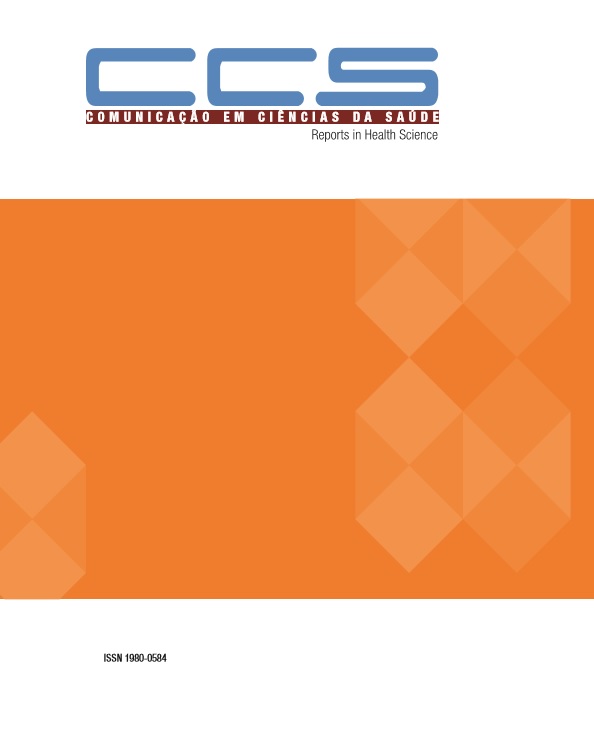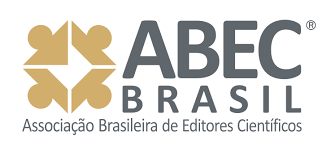The off label use of methylphenidate among medical students as a way to improve academic performance
DOI:
https://doi.org/10.51723/ccs.v30i01.396Keywords:
Estudantes de medicina. Metilfenidato. Automedicação. Psicotrópicos., Medical students. Methylphenidate. Self medication. Psychotropic DrugsAbstract
Objective: to identify the frequency of use of Methylphenidate by medical students at a medical school in Brasília - Distrito Federal. Methods: observational, analytical and cross-sectional study. A closed questionnaire was used, applied to the 1st to 5th grade students of the Medicine course. The data were tabulated and analyzed in the IBM SPSS 20.0 program. The significance level α ≤ 0.05 and the nominal variables were compared using the chi-square test. Conclusion: abuse of the use of methylphenidate among medical students of this faculty is known to improve academic outcomes. More than half have access to the drug without a prescription.
Downloads
References
2. Affonso R da S, Lima K silva, Oyama YM de O, Deuner MC, Garcia DR, Barboza LL, et al. O Uso Indiscriminado Do Cloridrato De metilfenidato Como Estimulante Por Estudantes Da Área Da Saúde Da Faculdade Anhanguera De Brasília (Fab). Infarma - Ciências Farm [Internet]. 2016;28(3):166–72. Available from: http://www.revistas.cff.org.br/?journal=infarma&page=article&op=view&path%5B%5D=1404%5Cnhttp://www.revistas.cff.org.br/?journal=infarma&page=article&op=download&path%5B%5D=1404&path%5B%5D=pdf
3. Jain R, Chang CC, Koto M, Geldenhuys A, Nichol R, Joubert G. Non-medical use of methylphenidate among medical students of the University of the Free State. South African J Psychiatry [Internet]. 2017;23:1–5. Available from: http://www.sajpsychiatry.org/index.php/sajp/article/view/1006
4. AGÊNCIA DE VIGILÂNCIA SANITÁRIA. Prescrição e consumo de metilfenidato no Brasil: identificando riscos para o monitoramento e controle sanitário. SNGPC Bol Farm. 2012;2(2):1–14.
5. Bioci N, Comprimidos SA. Ritalina® (cloridrato de metilfenidato). Novartis Biociências SA Comprimidos 10 mg. Bula. 2012;
6. Willcutt EG. The Prevalence of DSM-IV Attention-Deficit/Hyperactivity Disorder: A Meta-Analytic Review. Neurotherapeutics. 2012;9(3):490–9.
7. Feldens DG, Barboza RS, Martins BT, Fusaro LG, Dória MB. Desatenção, hiperatividade e impulsividade: reflexões críticas sobre o TDAH Palavras-chave. Interfaces Científicas. 2016;4(3):159–68.
8. Saúde O. Faculdades Adamantinenses Integradas ( FAI ) SHIRAKAWA , Dálize Mayumi ; TEJADA , Sérgio do Nascimento ; MARINHO , César Antonio Franco . Questões atuais no uso indiscriminado NO DO. 2012;46–53.
9. Leite E, Baldini N. Transtorno de déficit de atenção/ hiperatividade e metilfenidato: uso necessário ou induzido? Rev Eletrônica Gestão Saúde, Univ Brasília. 2011;02:151–5.
10. Sánchez C, Ramos C, Díaz L. Attention-Deficit / Hyperactivity Disorder: prevalence of risk in the scholastic scope of the Canary islands. Actas Españolas Psiquiatr. 2014;42(4):169–75.
11. Zito JM, Safer DJ, DosReis S, Gardner JF, Boles M, Lynch F. Trends in the prescribing of psychotropic medications to preschoolers. J Am Med Assoc. 2000;283(8):1025–30.
12. Coelho L, Chaves E, Vasconcelos S, Fonteles M, De Sousa F, Viana G. Transtorno do déficit de atenção e hiperatividade (TDAH) na criança: aspectos beurobiológicos, diagnóstico e conduta terapêutica. Acta Med Port. 2010;23(4):689–96.
13. Susana C. Consumo de estimulantes cerebrais nos estudantes de Medicina da Universidade da Beira Interior. Universidade da Beira Interior; 2013.
14. Carneiro SG, Prado AST, Moura HC, Strapasson JF, Rabelo NF, Ribeiro TT, et al. O uso não prescrito de metilfenidato entre acadêmicos de Medicina. Cad UniFOA [Internet]. 2014;9(1):49–66. Available from: http://revistas.unifoa.edu.br/index.php/cadernos/article/viewFile/1112/998
15. Norman GRGR, Schmidt HG. Effectiveness of problem-based learning curricula: theory, practice and paper darts. Med Educ. 2016;50(8):793–7.
16. Pasquini NC. Uso De Metilfenido (Mfd) Por Estudantes Universitários Com Intuito De “Turbinar” O Cerebro. Rev Biol e Farmácia [Internet]. 2013;9(2):107–13. Available from: http://scholar.google.com/scholar?hl=en&btnG=Search&q=intitle:No+Title#0
17. Cruz TCSC, Junior EP de SB, Gama MLM, Maia LC de M, Filho MJX de M, Neto OM, et al. Uso não-prescrito de metilfenidato entre estudantes de medicina na Universidade Federal d Bahia. Bahia [Internet]. 2011;81(1):3–6. Available from: http://www.gmbahia.ufba.br/index.php/gmbahia/article/viewFile/1148/1082
18. Teter CJ, McCabe SE, LaGrange K, Cranford JA, Boyd CJ. Illicit use of specific prescription stimulants among college students: Prevalence, motives, and routes of administration. Pharmacotherapy. 2006;26(10):1501–10.
19. Babcock Q, Byrne T. Student perceptions of methylphenidate abuse at a public liberal arts college. Vol. 49, Journal of the American College Health Association. 2000. p. 143–5.
20. DeSantis A, Webb EM, Noar SM. Illicit use of prescription adhd medications on a college campus: A multimethodological approach. J Am Coll Heal. 2008;57(3):315–23.
Published
Versions
- 2020-07-19 (2)
- 2019-10-31 (1)
How to Cite
Issue
Section
License
Declaro para os devidos fins que o artigo que estou submetendo representa um trabalho original e nunca foi publicado total ou parcialmente, e que se alguma de suas partes foi publicada possuímos autorização expressa para a publicação no periódico Comunicação em Ciências da Saúde (CCS). Esse artigo não foi enviado a outro periódico e não o será enquanto estiver sendo considerada sua publicação; caso venha a ser aceito não será publicado em outro periódico; e não contém material difamatório ou ilegal sob nenhuma forma, não viola a intimidade de terceiros, nem infringe direitos protegidos.
Eu e demais autores desse trabalho certificamos por meio desta declaração que:
- Concordamos com as normas editoriais e com o processo de revisão da CCS;
- Aceitamos a responsabilidade pela conduta desse estudo e pela análise e interpretação dos dados;
- Cooperaremos, sempre que solicitado, na obtenção e fornecimento de dados sobre os quais o manuscrito está baseado, para exame dos avaliadores;
- Não estão sendo omitidos quaisquer ligações ou acordos de financiamento entre os autores e companhias ou pessoas que possam ter interesse no material abordado no artigo;
- Não estão sendo excluídos ou omitidos deste artigo autores ou instituições participantes;
- Possuímos permissão para uso de figuras e tabelas publicadas em outras fontes;
- Possuímos permissão das pessoas e instituições citadas nos agradecimentos;
- O autor correspondente autoriza a publicação do endereço informado e e-mail do(s) autor(es) junto com o artigo;
- Assumimos a responsabilidade pela entrega de documentos verídicos;
- Autorizamos a publicação do referido artigo no periódico Comunicação em Ciências da Saúde, segundo critérios próprios e em número e volume a serem definidos pelo editor do periódico;
- Nos comprometemos a atender os prazos estipulados pelos editores do periódico Comunicação em Ciências da saúde;
- Estamos cientes de que a não manifestação no prazo de dois dias da revisão da diagramação, recebida por e-mail, será considerado aprovado para publicação.








